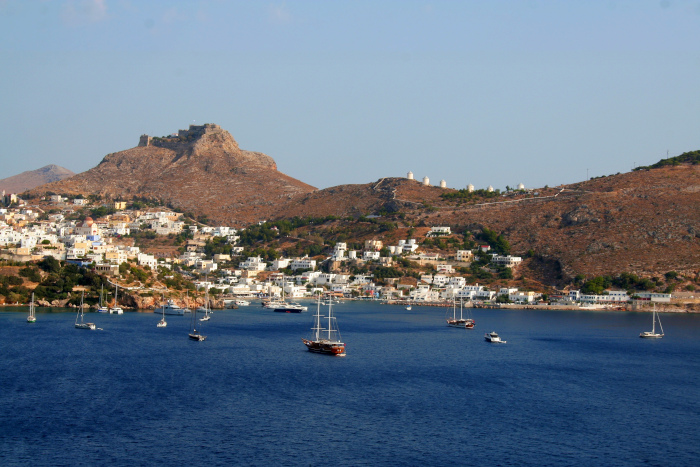Leros is part of the northern group of the Dodecanese, at a distance of only one nautical mile from Kalymnos. Dedicated to Artemis, forested Leros has been inhabited since prehistoric times. The island got its name, probably, from the ancient adjective "leros" which means flat, smooth.
The habitation of Leros is confirmed from the Neolithic Era (finds in the Partheni settlement 4000 - 3000 BC). As in the entire Aegean area, the first inhabitants of Leros were Kares, Leleges, Phoenicians and Cretans. They were followed by the powerful Dorians who arrived at Leros as conquerors.
The island's spiritual upsurge occurred in the 5th century BC. with the satirical poet Demodocus and the historian Pherekydes. The Byzantine era left brilliant traces, such as the basilica of Ag. Varvaras, from the early Christian period, the basilica in Partheni, (built with parts of marble, capitals and slabs from ancient ruins), the church of John the Theologian, Panagia Gourlomata and Panagia tou Kastro. In 1314 Leros was occupied by the Knights of St. John of Rhodes, who remained until 1523. Another key date for Leros was 1830, when all the Dodecanese were ceded by the London Protocol to Turkey in exchange for Evia .
But the period that left an indelible mark on Leros was the Italian occupation (1912 - 1943): The entire island was transformed into an arsenal, a naval base with important fortifications and military installations. A new city is being created in Lakki, an open architectural museum of experimentation and syncretism. An idiosyncratic innovative European architecture emerges. Leros is mercilessly bombed for 52 days by the Germans and is almost leveled. It was united with Greece along with the other Dodecanese in 1948.
The first human traces on the island were found in Partheni and belong to the Neolithic era. It is an entire settlement, estimated to have been there since 8000 BC. until 3000 BC
Homer claims that Leros took part in the Trojan War, along with Kalymnos, and later the historian Herodotus mentions Leros' close commercial and political relations with Miletus. The island was dedicated to Artemis and in ancient times matriarchy prevailed here, a tradition that continues to this day as the family's property is passed down to the girls.
During the 5th century, Leros flourished culturally and politically. Alexander the Great passed through Leros, on his way east, and left columns and coins found from that period on the island.
Plutarch also emphasizes the importance of Leros as a maritime trade hub, referring to Julius Caesar's capture of the neighboring island of Farmacus.
In 1314, Leros was occupied by the Knights of Agios Ioannis, who ruled the island and the Dodecanese until 1523, when the Ottoman Turks occupied the entire Aegean and annexed Leros to their empire.
In the early 1820s, Leros was one of the first islands to rebel against the Ottomans.
Leros was liberated at the end of the war by the Hellenic Holy Society. In 1948, along with the rest of the Dodecanese, it was annexed to Greece. At the time of the Seven Years Leros was a place of exile for dissident leftists. Today it is a quiet island of the Dodecanese that is ideal for relaxing and peaceful holidays.
Editor: Fotini Anastasopoulou
